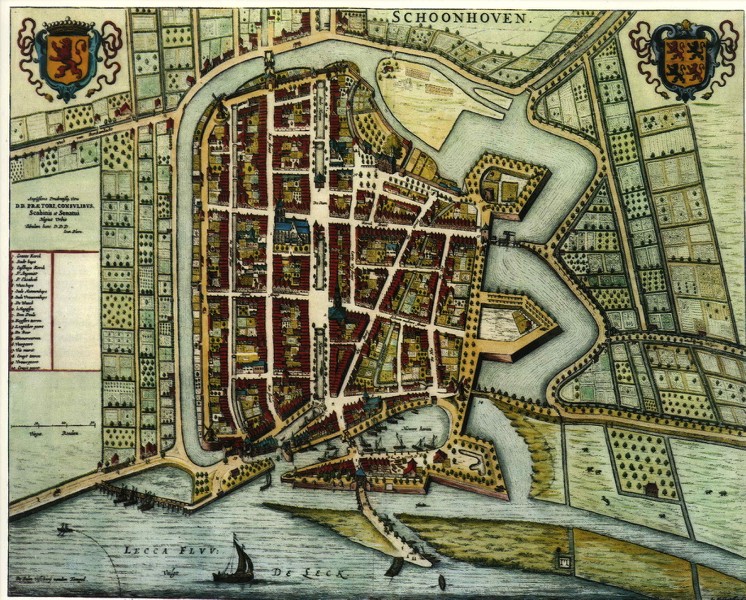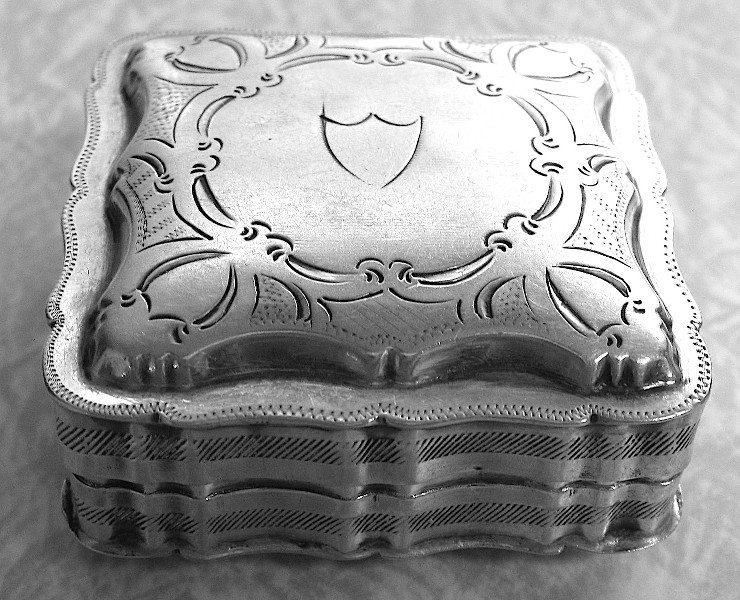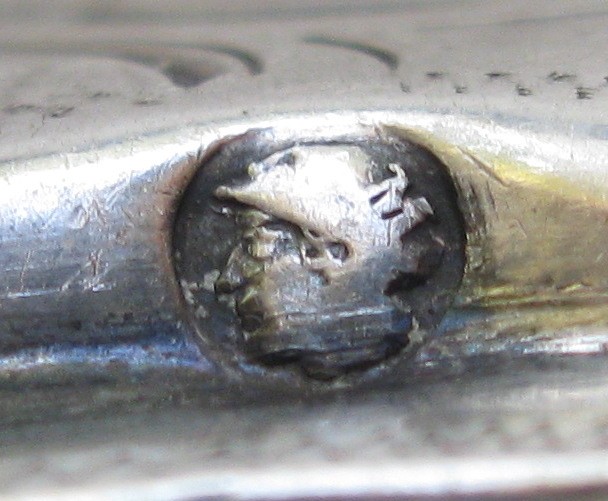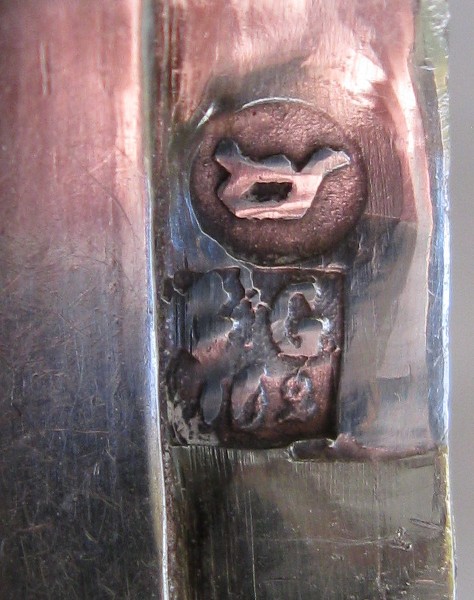Schoonhoven Hallmarks.
Introduction
Today private sellers and auction sites selling silver items on the internet show beautiful digital images of the objects. Including the existing marks on the object being; hallmarks, maker’s mark, retailer’s mark, pseudo mark(s) or other. This also offers opportunities for a new section dedicated to Schoonhoven. The 'Schoonhovense merken' or Schoonhoven Hallmark section.
Our aim is to discover unknown, rare marks used in Schoonhoven. Hopefully we will see the marks used during the guild period of Schoonhoven, which ended around 1807. During the period of the guilds, a lot of the Schoonhoven hallmarks, for example the style and shield shape of the various used year letters and the different Schoonhoven town marks used are unknown. Many maker’s marks used in Schoonhoven are still unknown or not seen before. In general to improve knowledge about the work made in the Silver City of Schoonhoven.
You are invited to show us your silverware made in Schoonhoven, to share knowledge, give information or make corrections. If you have questions, please feel free to ask and open a thread by using the Post reply button. We work together and share knowledge with a team of dedicated specialists. Specialists of silver made in Schoonhoven and also the editors and publishers of the ‘Zilver Histograaf Schoonhoven’
https://zilverhistograaf.nl/
https://zilverhistograaf.nl/zh/wp-conte ... 1-juni.pdf
Schoonhoven history in a nutshell.
In circa 1220 a castle was built on the north side of a small stream called "Zevender", near its mouth at the Lek River. The city of Schoonhoven was then formed near the castle. The oldest reference to the city is in a document from 1247, where it is referred to as Sconhoven. In 1280, it was granted city rights.
Around 1350, city walls and gates were constructed. The city's economy depended on shipping, brewing, fishing and agriculture. Schoonhoven was also the marketplace for the region. In 1518, the castle burned down and its remnants were removed in subsequent decades.

Schoonhoven in 1652 by Joan Blaeu
Between 1582 and 1601 the city's defense walls were renewed and expanded to include the shipyards as well. At this point, the fortifications mainly faced eastward (as can be seen on the 1652 map of Schoonhoven by Joan Blaeu) because of the historically strategically location on the border between the County of Holland and the Bishopric of Utrecht. Following the Disaster Year of 1672, they were reinforced once again and expanded on the west and north sides. Yet in 1816, when bastion fortifications were no longer relevant to the warfare of the time, they were mostly demolished and made way for a cemetery and a park. Nowadays, most of the city walls and gates too have disappeared. The only remaining medieval entrance gate of Schoonhoven is the Veerpoort (Ferry Gate) that faces the Lek River. This Veerpoort has protected Schoonhoven from the floods of the river Rhine and from the sea during the devastating North Sea flood of 1953 and is still fully functional as a water barrier today.
By 1860, the city had 2900 inhabitants. Not until the middle of the 20th century did the city expand beyond the former fortress limits; firstly in a north-westerly direction, and then eastward since the 1990s.
Schoonhoven is traditionally the silver city of the Netherlands. As a Silver City, Schoonhoven is almost 700 years old. After the lords of the castle commissioned the first silversmiths in the 14th century, the city has developed into a unique center of silver craft, industry and art.
In Schoonhoven you will find the national silver museum, the world's largest collections of Dutch silver however it has only a small collection of Schoonhoven silver. The silver museum gives the only silver training course in our country.In schoonhoven you will find modern silver in studios, galleries and workshops of gold and silversmiths spread over the old town. Sometimes in characteristic centuries-old buildings as part of a unique cultural heritage. The largest collection of Schoonhoven silver is located in the Edelambachtshuijs in Schoonhoven and belongs to the family/firm Rikkoert, one of the largest jewellery & silver business in the Netherlands.
https://www.google.com/maps/uv?pb=!1s0x ... ip6BAhlEAM
Together with silver events, many silver activities throughout the year and contemporary objects such as floating silver swans, master signs and imposing silver artworks around the city, they tell about the past, present and future of silversmiths.
https://www.inschoonhoven.nl/
Nederlands Zilvermuseum or the Dutch Silver museum is located in Schoonhoven.
https://zilvermuseum.com/?gclid=Cj0KCQj ... NbEALw_wcB
The city of Schoonhoven is 'world famous' as a silver city. This is not least due to the extensive export from Schoonhoven to England and the United States since the second half of the 19th century. To give an impression of the importance: in 1891, according to silver silversmith/manufacturer & salesman Van Willenswaard, Schoonhoven exported 1,500 kilos of silver objects, while according to the Waarborg in 1893, 1,720 kilos of silver were processed for
new domestic use, 'Nieuwe Inlandsche Werken' in the Netherlands! (1.)
Due to demand, the export was often accompanied by the use of 'pseudo' guild hallmarks an/or guild maker's marks (2.)
As a result, questions about Schoonhoven and the pseudo-marks regularly appear on the Forum from England and the US. The city of Schoonhoven has therefore rightly been given its own place within the international Forum.
For general information about Dutch hallmarks see;
viewtopic.php?f=5&t=32028
For Schoonhoven scroll down;
viewtopic.php?f=5&t=32028&p=82869#p82869
Peter.
Source/Gratitude;
Wikipedia, city of Schoonhoven, Zilver Histograaf Schoonhoven/Rene Kappers
(1.) Van Willenswaard 1934: ‘In 1891 werd uit Schoonhoven uitgevoerd naar het buitenland 1.500 kg. zilver, voor het merendeel alle antieke modellen’; Collectie Van Dongen Inv.nr. 718; Kappers Getallen uit de 19e eeuw. Zilvercahier 5.0 (Schoonhoven 2003) dia 16.
(.2)Van Willenswaard 1934‘Dit imitatie antiek zilver is toen bij verbazende grote partijen gemaakt en naar het buitenland afgeleverd’; Citroen, Rode Citroen; Vreedenburgh Antiek industrie; Kappers Besamim; idem Zilveren lepel 275/000.



